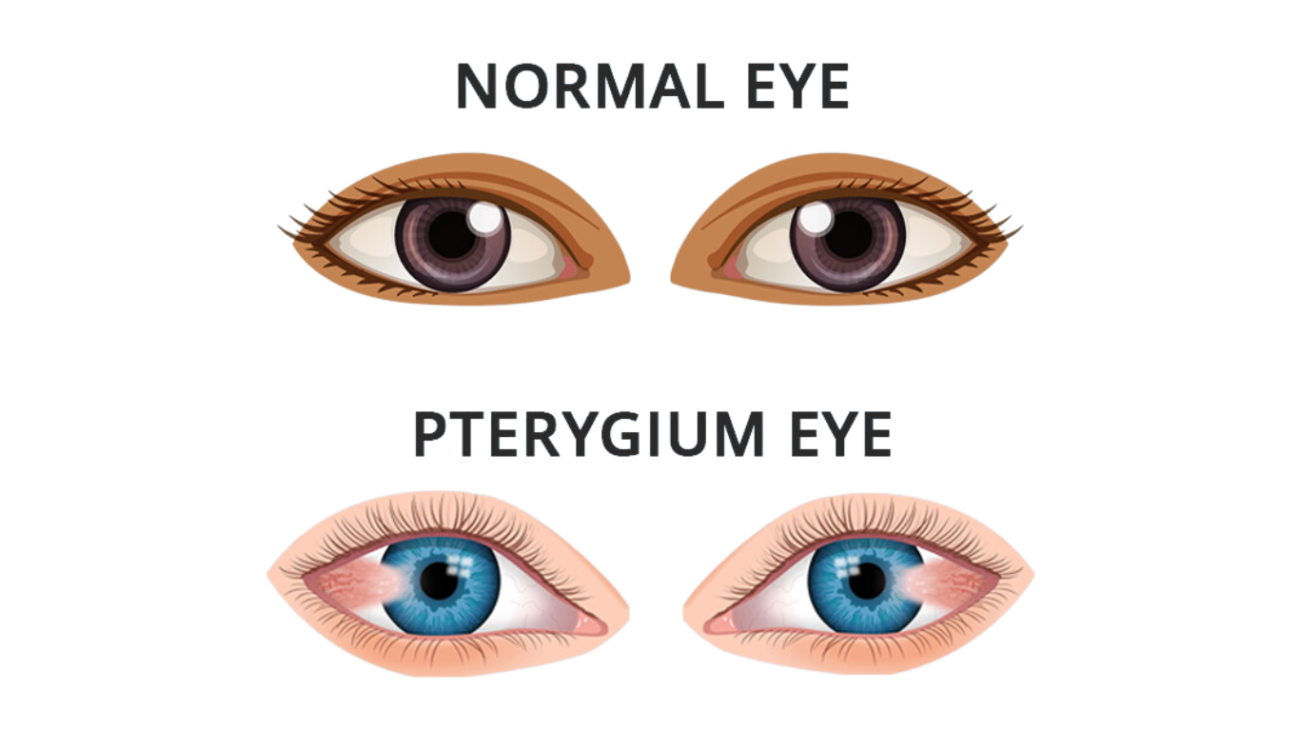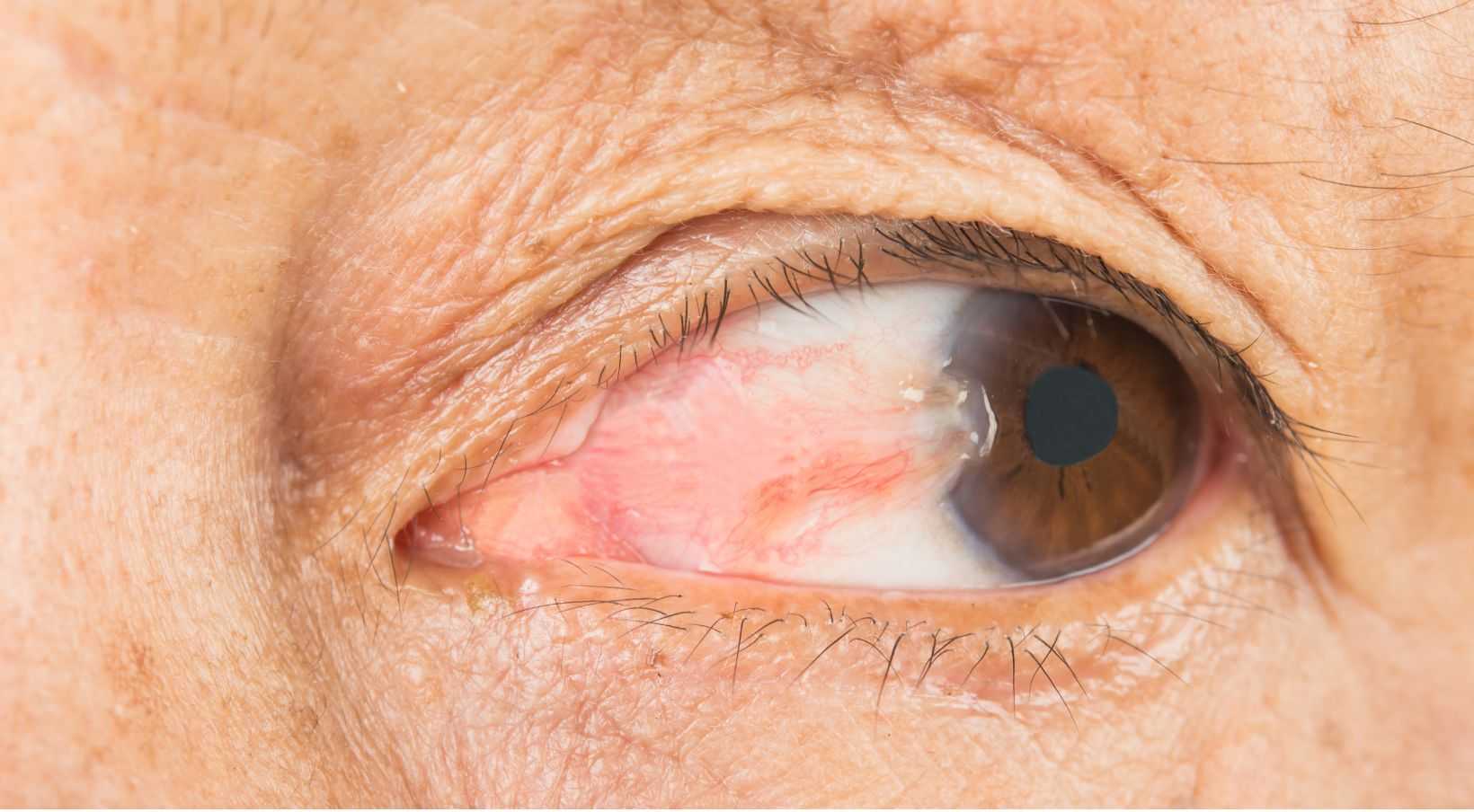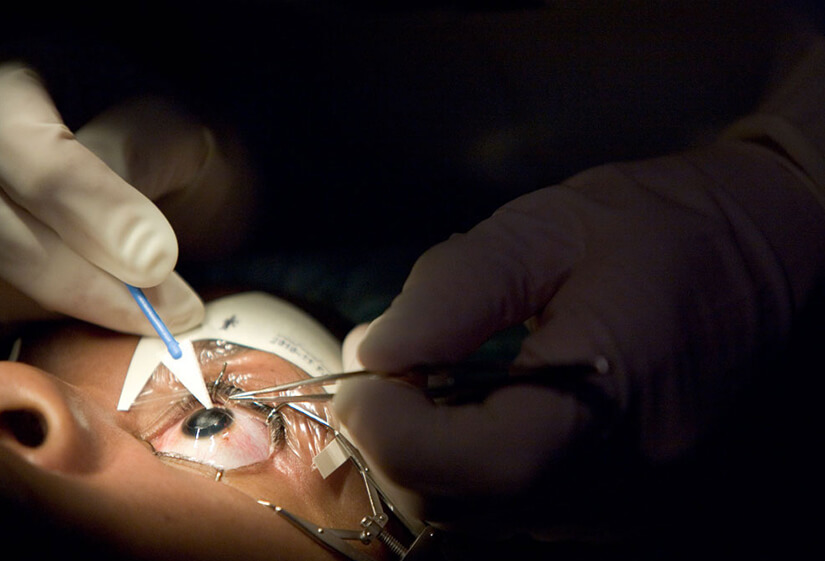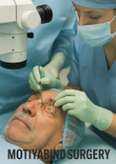Introduction:
Pterygium is more than just a cosmetic concern; it can cause various discomforts and even affect vision if not managed properly. In this article, we will explore Pterygium symptoms, potential causes, and effective ways to prevent and treat it.
Understanding Pterygium Symptoms:
Pterygium is a growth that frequently originates from the inner corner of the eye; subsequently, it extends towards the cornea. It might manifest as a raised, reddish, and fleshy mass, which can understandably be concerning to those experiencing it Although the exact cause remains unclear, experts consider prolonged exposure to UV radiation and dry, dusty environments as significant contributors.

Common Pterygium Symptoms:
- Redness and Irritation: Pterygium can cause persistent redness and irritation in the affected eye.
- Foreign Body Sensation: Individuals may feel as though there’s a foreign object in their eye.
- Blurred Vision: The growth’s position on the cornea can distort vision and lead to blurriness.
- Dryness: Pterygium can disrupt tear film distribution, leading to dry eye symptoms.
- Astigmatism: In some cases, it can induce astigmatism, causing distorted or double vision.
Factors Leading to Pterygium:
Excessive exposure to ultraviolet (UV) light, particularly from the sun, is a leading factor in pterygium development. People who spend extended periods outdoors without eye protection are at a higher risk. Additionally, frequent exposure to dust and wind can further aggravate the condition.
Prevention Measures for Pterygium:
- UV Protection:
- Eye Lubrication:
- Avoidance:
Treatment Options for Pterygium :
Ophthalmologists often manage mild cases of pterygium with lubricating eye drops and anti-inflammatory medications. However, more advanced cases may require surgical intervention to remove the growth and prevent vision impairment.
Surgical Interventions:
Ophthalmologists often manage mild cases of pterygium with a combination of lubricating eye drops and anti-inflammatory medications. Additionally, they may recommend using sunglasses or protective eyewear to prevent further irritation.
Procedures like conjunctival autografting involve removing the pterygium and replacing it with healthy tissue from the patient’s own eye. These surgeries are usually effective and have a low recurrence rate.
Post-Treatment Care:
After surgery, following the ophthalmologist’s instructions for proper post-operative care is crucial. This includes using prescribed eye drops, avoiding eye strain, and attending follow-up appointments.
Managing Recurrence:
While surgical removal is effective, pterygium can recur, especially if preventative measures aren’t taken. Regular check-ups with an eye care professional and diligent adherence to preventive practices are key.
Impact on Vision:
Pterygium’s impact on vision can vary. In mild cases, it might not cause significant issues, while in more advanced cases, it can lead to astigmatism, blurred vision, and even a loss of visual acuity.
Lifestyle Recommendations:
Adopting a healthier lifestyle can indeed contribute to improved eye health. By consuming a diet rich in antioxidants, individuals can provide essential nutrients that support their eyes’ well-being. Furthermore, staying adequately hydrated is crucial as it helps in maintaining proper eye moisture and overall comfort. Additionally, ensuring you get sufficient sleep is also paramount, as it allows your eyes to rest and rejuvenate, promoting optimal eye health.
When to Seek Medical Attention:
If you experience persistent redness, irritation, blurred vision, or any other concerning eye symptoms, it’s advisable to consult an eye care professional for a proper evaluation.
Dispelling Myths:
Contrary to some misconceptions, pterygium is not caused by touching toads or frogs, and its growth is unrelated to myths about falling stars.
Author details:
Dr. Sinchana Adyanthaya is a dedicated ophthalmologist with a wide range of experience. She has excelled in routine OPD work, managed high-volume OPDs, and performed various eye procedures. Her fellowship in Cornea and Refractive Surgery has enhanced her skills in advanced corneal investigations and surgeries. Dr. Adyanthaya has published research articles, presented at conferences, and actively participated in academic activities. With her proficiency in multiple languages, she ensures effective communication with patients.

Book Your Appointment Now
Conclusion:
Pterygium is a common eye condition that, while not usually serious, can cause discomfort and vision issues. By understanding its symptoms, taking preventative measures, and seeking timely treatment, individuals can effectively manage this condition and maintain optimal eye health.
FAQs:
- Is pterygium surgery painful? Pterygium surgery is performed under local anesthesia, so patients typically experience minimal discomfort during the procedure.
- Can I prevent pterygium with eye drops alone? While lubricating eye drops can help with symptoms, preventing pterygium requires a combination of UV protection and other preventive measures.
- Is pterygium contagious? No, pterygium is not contagious. It is a non-infectious growth caused by environmental factors.
- Can pterygium lead to blindness? In rare cases where pterygium severely affects vision and is left untreated, it could potentially contribute to vision impairment, but complete blindness is unlikely.
- Is wearing sunglasses indoors necessary after pterygium surgery? While not necessary indoors, wearing sunglasses with UV protection outdoors is recommended to prevent recurrence and protect the eyes.












